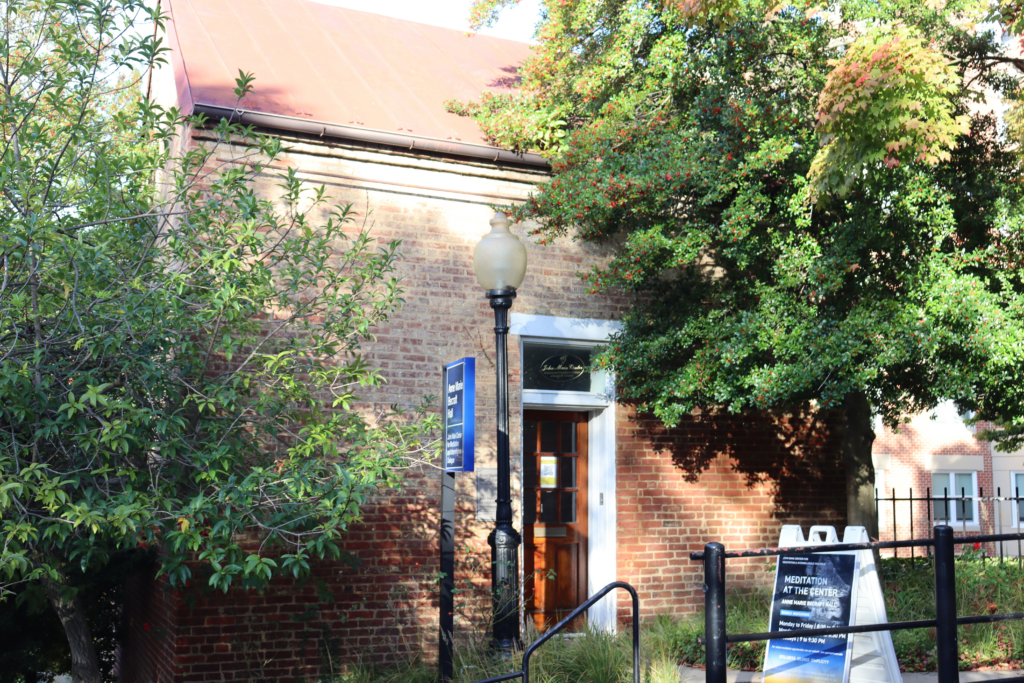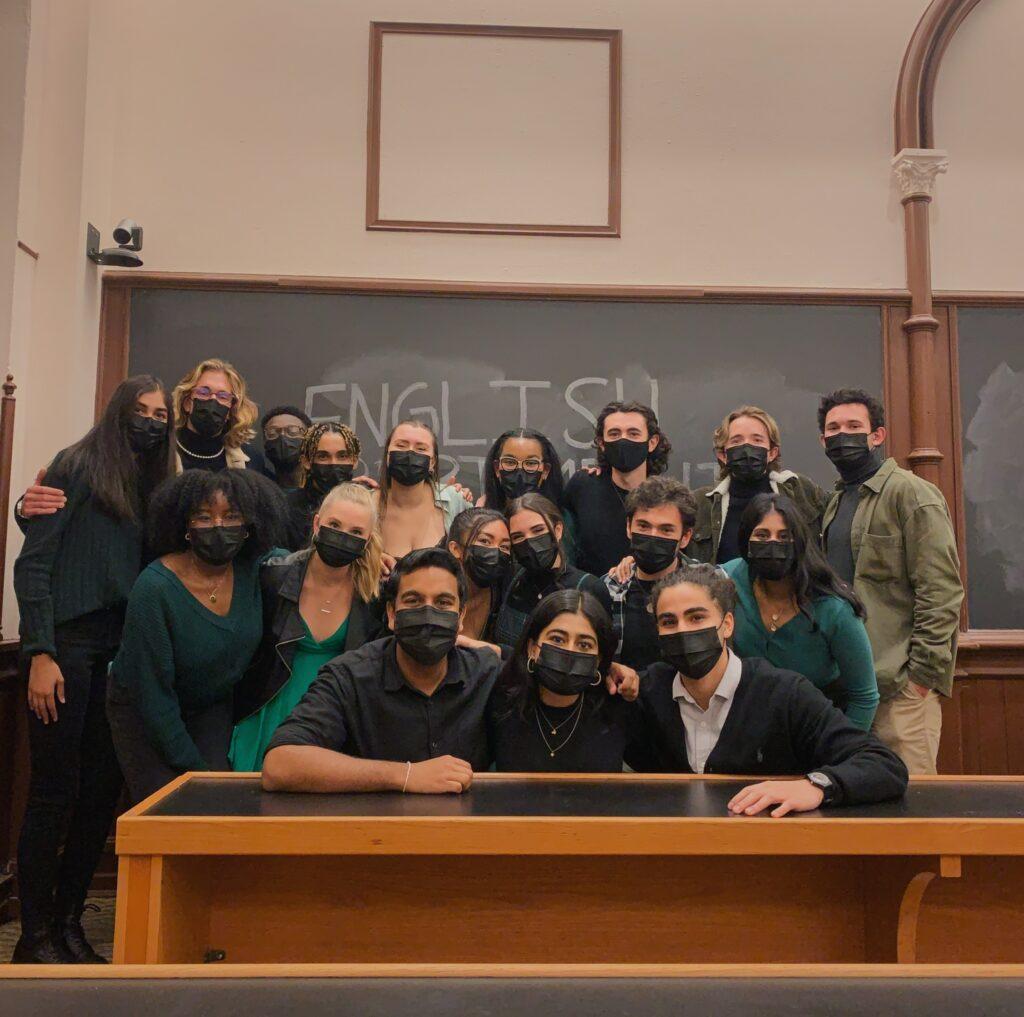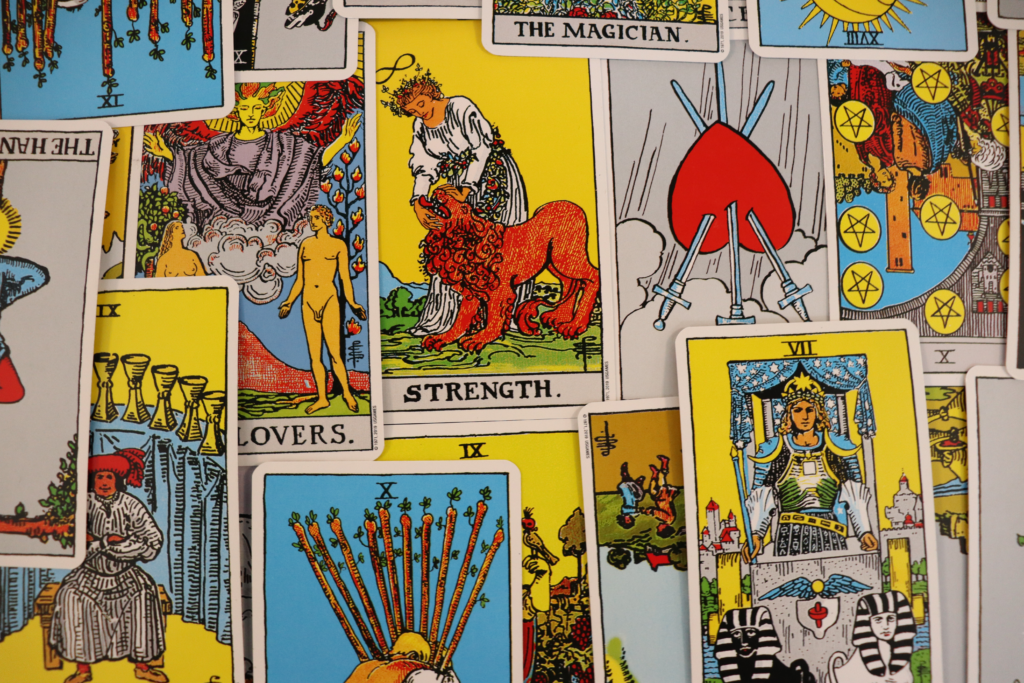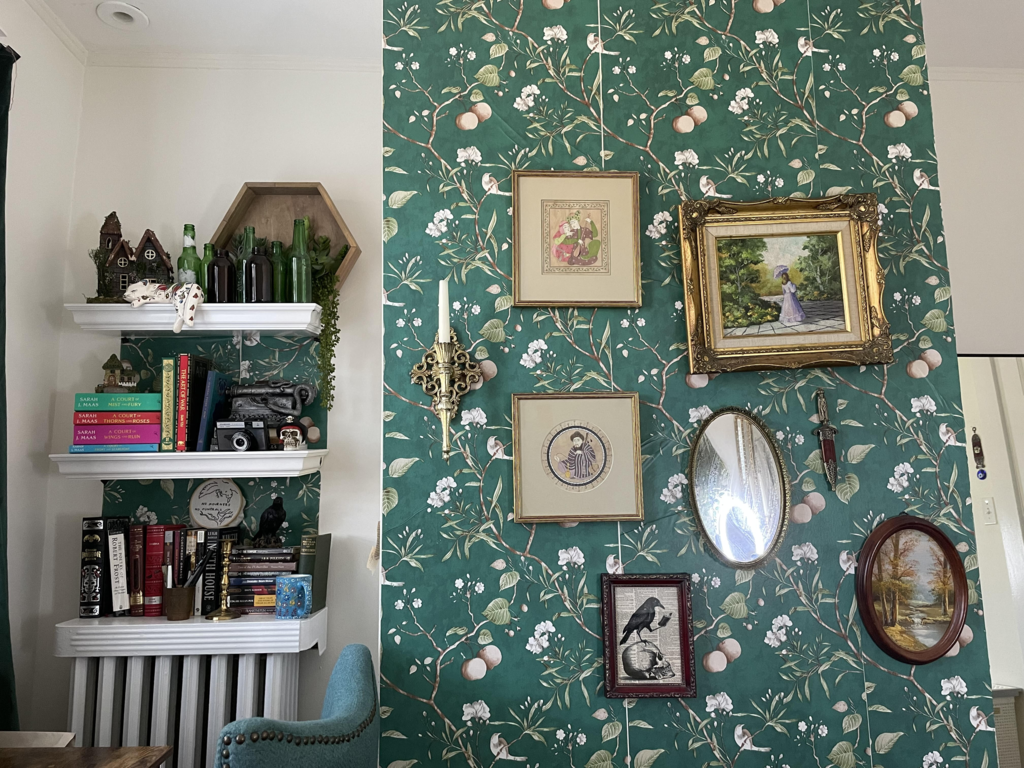Bathed in the early-morning light, among the flaming red changing leaves of nearby trees, Georgetown University students can find serenity tucked away in the oldest and smallest building on campus: a red brick structure on Old North Way across from New South Hall.
The John Main Center for Meditation and Interreligious Dialogue (JMC) hosts daily meditations out of this tiny building, Anne Marie Becraft Hall. The director of the JMC, Lisa Directo Davis, is a fixture of the center and sees the impact of meditation on students who come to share the practice. Especially when college gets stressful, meditation can invite stillness and quiet into students’ minds, according to Davis.
“The minute you sit down and you’re quiet and you breathe, even for like one or two minutes, it reorients your mind; it reorients your body,” Davis said in an interview with The Hoya.
By hosting regular meditation sessions in the middle of the Georgetown campus, the JMC provides a space where students, faculty and staff can practice mindfulness and improve their emotional wellness. However, the JMC is far from the only option students have to engage in meditation; on Nov. 4, the Georgetown University Dharmālaya, a Dharma meditation space in the Copley Hall basement, will hold its opening ceremonies.
Along with student-run organizations like the Buddhist Student Association (BuSA), these two campus spaces are making meditation more accessible to the Georgetown community. When life feels thoroughly unpeaceful, these groups encourage students to take a moment and deep breathe.
Coming Back to the Present
The practice of meditation is different for everyone, every time, according to Ellena Joo (SFS ’22). A board member of BuSA who has meditated both secularly and religiously, Joo said that external factors can affect her daily meditation to craft a different experience every time she sits down for the practice.
“While I meditate, I never have the same experience twice. It’s very much like a conversation with myself. For me, depending on what’s going on and what’s at the forefront of my mind, it varies a lot,” Joo said in a Zoom interview with the Hoya. “I meditate with a philosophy that anything goes.”
Davis noted that while her meditation is influenced by external factors, its introspective nature has also helped her to improve her awareness of both her mental processes and what is going on in the world around her.
“How I experience meditation depends on the day; it depends on the moment. It depends on if I have done a physical practice to help me really prepare for the physicalness of meditation,” Davis said. “So the emotional state, physical states, all of these other things can impact how the first few moments are practiced.”
Davis’ years of meditating have given her the skills to deal with this variable nature of everyday practice while simultaneously keeping in mind the fact that meditation is also a practice centered around stillness. Davis encouraged consistent practice to develop a sense of comfort with silence and calm.
“If you know what you’re entering into and you’re not making it up every single time, you’re not shifting from one different practice to the next practice,” Davis said. “No matter how I feel or what I’m struggling with that day, that will always kind of start to draw me to be more rooted in good practice.”
Whether students attend the weekday morning sessions at the JMC from 8:30 to 9 a.m., or just focus on mindfulness walking between classes, opportunities for meditation are everywhere. Ven. Yishan Qian, a Buddhist residential minister on campus, stressed that finding small moments to engage with meditation is the key to an effective practice.
“It’s helpful to make meditation your habit. We have many habits and a way in our daily life, like what we do like when before eating right in the morning, before going to class or in the evening, when after we finish all our coursework. So, before we go to that, at that moment, there you can find a time for meditation,” Qian said in a Zoom interview with the Hoya. “Meditation can be only one minute or five minutes if you have time, or you can do it only in five seconds.”
Taking Deep Breaths
As Georgetown students return to in-person learning, many are struggling with academic stress coupled with the increased burdens of maintaining a more in-person social life. Georgetown students are still adjusting to these overwhelming changes.
Some students, like Mallory Hybl (NHS ’22), a student leader at the JMC, find that meditation can be a way for many people to effectively improve their mental health.
“It really does help with stress and mental health and just kind of allows students to hopefully get a different perspective and find some space,” Hybl said in an interview with the Hoya. “I also think that meditation as a practice allows us to live more deeply into who we truly are as human beings.”
Hybl said meditating at Georgetown has been especially helpful in seeking a calm environment since returning to campus.
“I initially just started going to the center to find a little bit of peace and quiet and a little bit of grounding. I’m from Colorado, so changing environments in states was a little bit overwhelming,” Hybl said. “It’s always nice to just be able to go to the center and just find the little space for some stillness, silence and simplicity.”
Similarly, Joo said that students, in response to myriad on-campus stressors, actively seek out reflective spaces on campus. As a result of this interest, BuSA hosts meditation exercises open to all interested students. They even held a “Meditate Under the Stars” event with the Astronomy Club in the Georgetown observatory.
“We ended up using the meditation Sangha poster for tabling, and a lot of students came up asking about meditation,” Joo said. “We had around 100 students sign up, which is more than we’ve ever had. It was clear that a lot of students wanted to get involved because they wanted a space that they could meditate in.”
Beyond wanting a space to escape from hectic university life, Joo said some students specifically seek out meditation resources to cultivate a spiritual approach when caring for their mental health.
“I really do think students try to look for communities where they can be mindful and reflective in an organic way that is also friendly,” Joo said.
The Way of Wellness
From personal reflection to stress relief, there are plenty of benefits to meditation. Davis highlighted a central strength of meditation through personal introspection: compassion.
“The most important thing that meditation cultivates within myself is a sense of awareness, not only where I’m at personally but also how others are around me — not just people, but every creative being,” Davis said.
Meditation practices can often provide a sense of self-awareness, developing a deeper knowledge of the self and a heightened awareness of others, according to Davis. Furthermore, Davis said this awareness of oneself and others fosters self-compassion, an increasingly valuable quality for Generation Z students, who are struggling now more than ever with anxiety and depression-related mental health concerns.
“It reorients people to realize they have the capacity to not always enter into the chaos and the haste and that they have the capacity to step out of it and also observe it and learn from it,” Davis said.
Meditation communities on campus, whether through the JMC, the Dharmālaya or other organizations like BuSA, provide students with welcoming communities that are focused on furthering their emotional well-being. Hybl said the JMC in particular has provided her with a home and a sense of belonging on campus.
“I think what students hopefully get is just a sense of community. It’s a lovely little space, and it’s so nice to see the same and some new faces, at least when I lead in the morning. It’s just a beautiful group of humans and a good way to start the day,” Hybl said.
Ultimately, outlets for reflection, self-compassion, community and relaxation are resources students desperately need as they grapple with a unique hybrid learning experience of returning back to campus. Davis sees meditation as a positive opportunity to combine the ambition of Georgetown students with kindness and compassion for a better world.
“If you can just taste this while you’re here during your time in Georgetown, experience this, we hope that that plants a seed so that it’s something that you’ll cultivate,” Davis said. “It’ll make you a bigger, more compassionate person, which is really what our world needs. Not just to be intellectually achieving or successful, but a whole person.”




















